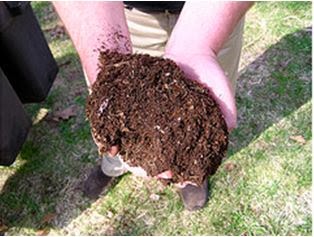As I write this my first blog post at the end of February 2014, the Houston Area is already in a drought ( Area Drought Report). It looks like we just didn't get enough rain this winter.
So what would drought have to do with the upcoming lawn growing season (with the warmer weather and longer days we have had lately we are already seeing grass beginning to wake up and green up)? Whether or not the drought continues, worsens, or ends, we want be more proactive rather than reactive this year with regard to our lawn fertilization program. We have put together a lawn fertilizer program that goes beyond just putting nitrogen (the greening up stuff) on your lawn. As good and necessary as nitrogen is, it is not enough to create a turf that is resilient in drought conditions or when it is just plain hot. In addition to nitrogen, we are going to focus this year on building better soils. Soils that are filled with more minerals, soils that are looser, less compacted, allow for deeper roots, have more air inside and take in more water each time your sprinkler is in operation.
Please take a stroll through the lawn below (look at numbers and read descriptions below the picture) to see areas we can address with regard to building a healthy lawn that can better handle stress from either drought or heat.
1) Top-dressing with Compost
- Compost is often called "Black Gold" by experienced gardeners as it does so many good things for the soil. Good compost is loaded with microorganisms that prevent disease, cycle nutrients, and create soil structure. It is also full of carbon which is needed by earthworms and other soil life forms. Humus in compost helps increase the water holding capacity of all soils, hence reducing plant stress. The microorganisms in compost help release the nutrients in the organic fertilizer and trace minerals and make them available to plants without polluting the environment. Earthworms and microbes eat the compost and create good soil structure in the process allowing proper aeration which helps prevent diseases.
- We will top-dress your lawn once or twice in the year at a 1/4 inch level. It is recommended that your lawn be aerated (see number 4 below) prior to topdressing for better results.
- You've seen it before. When fertilizer is applied, the grass greens up and grows up and so do the weeds. Weeds love nitrogen. Their roots are usually deeper than the roots of your turf and so they have plenty of water - they don't even need your sprinkler system. Mix some nitrogen with a good water supply and kaboom, an explosion of weeds. Weeds thrive in poor, compacted soils, like we have in Katy.
- We are licensed by the state to treat weeds with EPA approved chemicals.
- We will treat your lawn for weeds after each fertilizer application (Early Spring, Spring, Early Summer, Late Summer and Fall).
- We will apply lawn fertilizer products that in addition to nitrogen will provide over 70 minerals, vitamins, natural plant sugars, amino acids, carbon and protein plus billions of beneficial microorganisms.
- Our schedule for applications this year will be Early Spring, Spring, Early Summer, Late Summer and Fall
- Technically speaking, aeration is the naturally occurring process of air exchange between the soil and its surrounding atmosphere. Practically speaking, aeration is the process of mechanically removing small plugs of thatch from the lawn to improve soil aeration.

- Benefits from Core Aeration
- Better air exchange between the soil and its surrounding environment
- Improved nutrient absorption
- More efficient water usage
- Thicker turf
- Enhanced thatch breakdown
- Helps loosen compacted soil
- Allows nutrients, water and air to more easily get to the root zone
- Aeration promotes deeper root growth for a lawn that is lush, healthy and drought resistant
- Customer's Part
- Prior to Aeration, customer must flag (you could use plastic spoons or flags) each sprinkler head in the lawn to prevent damage. Golden Rule Lawn can flag the lawn for an additional fee.


